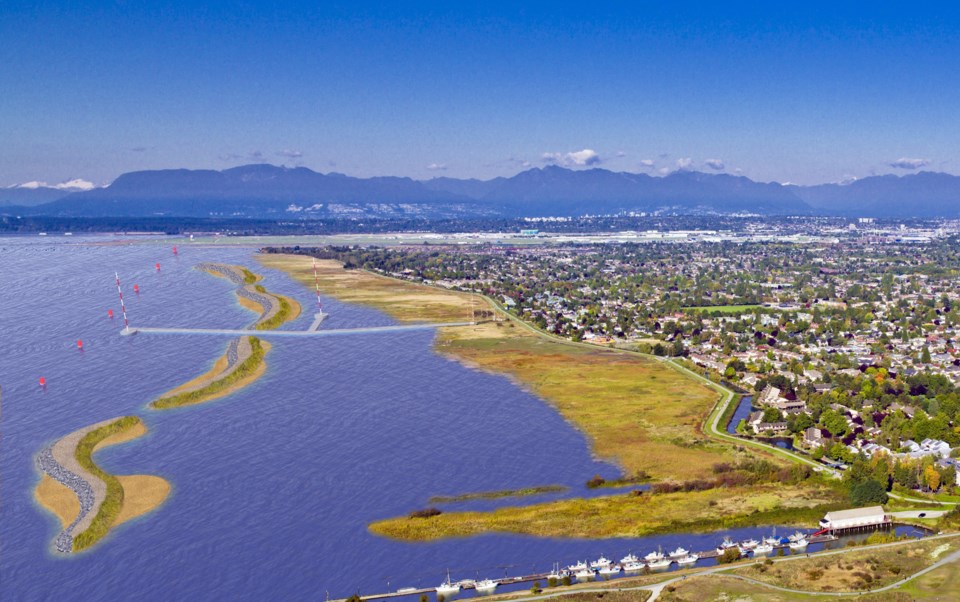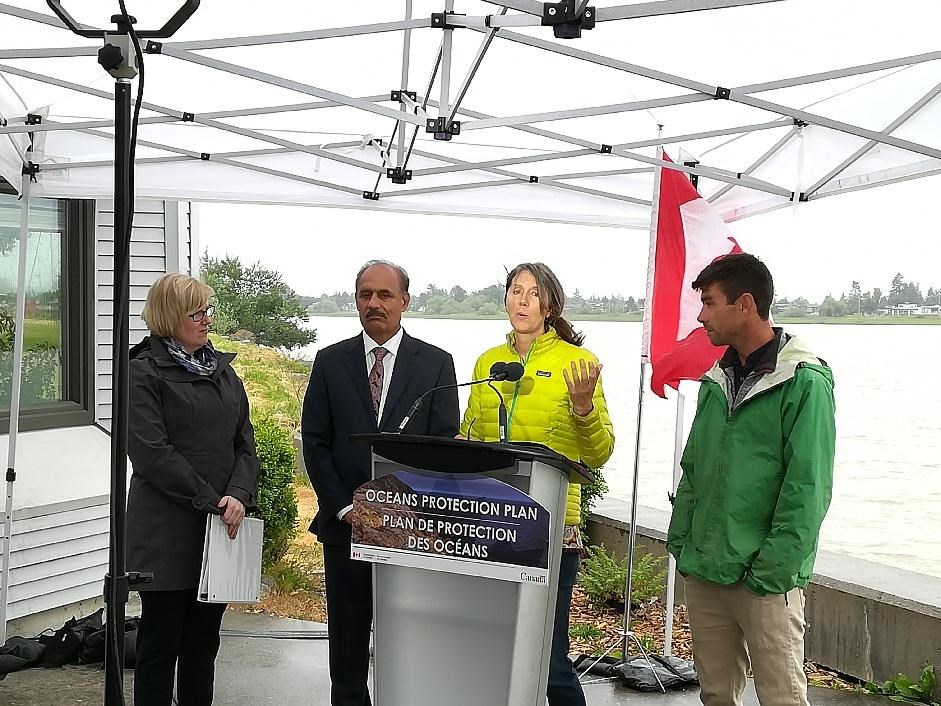The Raincoast Conservation Foundation has received $2.66 million dollars from the federal government to improve juvenile salmon habitat near the mouth of the Fraser River.
Delta MP Carla Qualtrough announced the project on Sea Island Friday morning. The money comes from the $75 million Coastal Restoration Fund the government claims will help to rehabilitate some of the country’s most vulnerable coastlines and protect marine life and ecosystems.
Over five years, non-profit environmental group Raincoast Conservation Foundation will use the funds to improve fish habitat in the estuary, which is facing threats from development and port activity.
The government notes: “Numerous training walls and rock jetties constructed in the Fraser River (e.g. North Arm, Iona, Steveston) have changed salinity, temperature, and sedimentation patterns in the estuary, which has led to the erosion of marsh channels, poor growing conditions and limited access for juvenile salmon.”
Sturgeon Bank, in particular, is receding because of rising sea levels and sediment not reaching the vegetation. The sediment acts to restore soil that is washed away in storms. According to local government scientists as the soil is eroded, so are the grasses, which provide habitat for salmon. The bank acts as flood protection against the west dyke. As such the City of Richmond has reported exploratory efforts by the provincial and federal governments to build sea berms off the bank.
“The Restoring Estuary Connectivity on the Delta of the Fraser River Estuary project will reconfigure key impediments to connectivity in the Fraser estuary (e.g. North Arm and Steveston jetties, Iona causeway) to restore freshwater benefits in the Fraser estuary, improve marsh habitat conditions, and provide broader access for juvenile salmon, potentially improving their early marine survival,” notes a news release from Fisheries and Oceans Canada.
It adds: “This project has the potential to improve food availability within the critical habitat of endangered Southern Resident killer whales.”
“I am proud to support this Coastal Restoration Fund project that will protect British Columbia’s biodiversity and restore important salmon habitats. Our funding will facilitate collaborative efforts to carry out this essential work along the Fraser River,” said Qualtrough.

Her Liberal government is in the process of reviewing Roberts Bank Terminal II, a proposed container terminal for Port of Vancouver. The terminal would destroy equally sensitive marshland and salmon habitat off of Delta, just south of the Fraser.
Meanwhile, the government intends to fund and build a twinned Trans Mountain pipeline that would increase oil tanker traffic seven fold off the coast of Richmond. B.C. residents are split on the project, according to polls. Those close to the water fear the ship traffic (noise) will harm whales and a spill could be catastrophic to the environment.
The Vancouver Fraser Port Authority is studying the impact of shipping noise on whales.
Federal officials recently shut down some salmon and recreational fishing for the summer in key feeding grounds for killer whales.
The closures, which took effect June 1, apply to parts of the southern Gulf Islands, portions of Juan de Fuca Strait, and areas around the mouth of the Fraser River. It’s the latest move by Fisheries and Oceans to protect the endangered southern resident orca population by conserving their favourite food — Chinook salmon.



